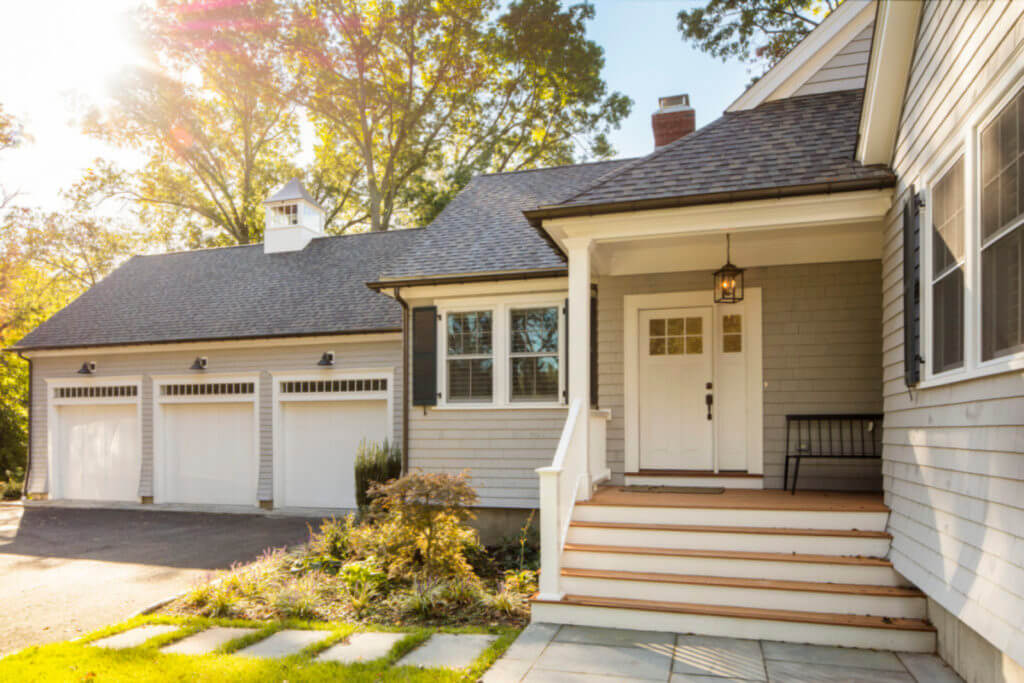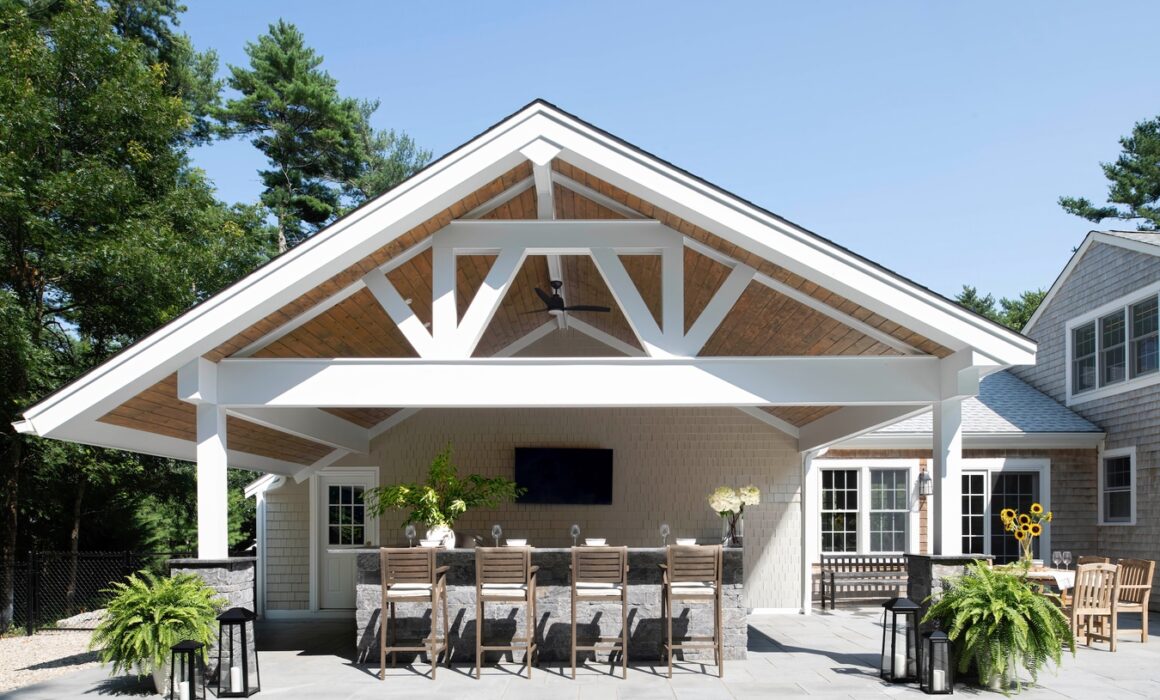Architect vs Designer: Who Is Right for Your Project?
Choosing the right professional for your home renovation or construction project can be overwhelming. But, understanding the difference between an architect vs designer can help. Our blog post breaks it down so you can make an informed decision and hire the right person for the job.
Architect

What is an architect?
An architect is a professional who designs the structure, form and style of a building. Architects are also responsible for creating drawings, plans, and specifications that accurately describe the structure they have designed. They must also ensure that their designs meet local building codes and laws, as well as the needs of their clients.
What are the educational requirements of an architect?
Architects must have a professional degree in architecture from a school accredited by the National Architectural Accrediting Board (NAAB). The degree typically takes five years to complete and includes courses in design, history, and theory. Additionally, all 50 states and the District of Columbia require architects to be licensed to practice architecture. To become licensed, architects must pass the Architect Registration Exam (ARE). In some states, additional exams may be required.
Roles and Responsibilities of an Architect
Architects are the structural and creative brains behind home remodeling and building projects. Their responsibilities involve translating the vision of the homeowner into a tangible design that can be implemented by the construction team.
Firstly, architects work with the homeowner to understand their needs, wants, and budget constraints. They analyze the existing space and come up with a design that maximizes functionality and aesthetics. This involves selecting the appropriate materials, finishes, and building systems to achieve the desired outcome.
Secondly, architects are responsible for creating detailed drawings and plans that outline the construction process, from the foundation to the placement of electrical outlets. These plans serve as a guide for the construction team, ensuring that the project is executed to the highest standards of quality and safety.
Additionally, architects are responsible for navigating the complex regulatory landscape of home building and remodeling. They ensure that the project adheres to zoning laws, building codes, and other legal requirements. They also manage the permitting process and coordinate with government agencies to obtain approvals as needed.
In summary, the roles and responsibilities of an architect in home remodeling and building are multifaceted. They are responsible for communicating with the homeowner, designing the space, creating detailed plans, ensuring adherence to regulations, and managing the construction process to ensure the project is completed on time, within budget, and to the highest standards.
What are the pros and cons of using an architect?
Pros
- Architects can bring a creative, unique vision to a home building or remodeling project.
- Architects can help homeowners save money by ensuring that the building or remodeling project utilizes the most efficient materials and techniques.
- Architects are experienced in designing homes and other structures to meet local codes and regulations, which ensures that the project is completed safely and in compliance with the law.
- Architects can help create a unified design aesthetic throughout a home, making it look cohesive and inviting.
Cons:
- Architects can be expensive, so it may not be a viable option for smaller projects or those on tight budgets.
- Architects may not always have the same vision as the homeowner, leading to potential conflicts and disagreements.
- Architects may require a lengthy process to design and draft plans, which could delay the start of the project.
Architectural Designer

What is an Architectural Designer?
An architectural designer (AD) is an architectural professional who is responsible for preparing design documents, such as plans, drawings, and specifications, for the construction of new buildings or the renovation of existing structures. They are typically employed in the design and construction industry, and their duties may include site analysis and research, developing concept plans, preparing detailed drawings, and creating 3D models. ADs often collaborate with other professionals, such as engineers, surveyors, and contractors, to ensure the successful completion of a project.
What are the education requirements of an architectural designer in the United States?
Most architectural design positions require at least a bachelor’s degree in architecture or a related field. Some employers may also require a master’s degree in architecture or a related field. In addition, many employers prefer applicants who have completed internships or have some work experience in the field. Depending upon the specific job requirements, some employers may also require professional licensure or certification.
Most architectural design positions require at least a bachelor’s degree in architecture or a related field. Some employers may require a master’s degree in architecture. Additionally, many employers prefer applicants who have completed internships or have some work experience. By obtaining licensure or professional certifications, candidates can demonstrate their competence and commitment to deliver superior results.
Roles and Responsibilities of an Architectural Designer
An architectural designer plays a significant role in home remodeling. They work closely with homeowners to understand their needs, preferences, and budget constraints in order to create functional and aesthetically pleasing designs. The responsibilities of an architectural designer may include site visits, taking measurements, generating detailed plans, and coordinating with other professionals such as contractors, engineers, and interior designers.
Architectural designers are responsible for creating designs that are not only beautiful but also safe and structurally sound. They must have a strong foundation in architecture and be familiar with building codes and construction materials. Furthermore, they must be able to create designs that are sustainable and energy-efficient.
In addition to their technical skills, architectural designers must also have excellent communication and interpersonal skills. They must be able to effectively communicate with homeowners, builders, and contractors to ensure that the project runs smoothly from start to finish. They must also be skilled at managing time, resources, and budgets.
Overall, an architectural designer is a crucial member of any home remodeling team. They play a critical role in ensuring that the project is executed with precision and attention to detail, resulting in a final product that meets the needs and desires of the homeowner while also adhering to building codes and regulations.
Architecture vs. Architectural Design

What Are the Key Differences Between Architecture and Architectural Design?
Architecture is the art and science of designing and constructing buildings and other physical structures such as bridges and monuments. It is concerned with the form and function of the structure and how it fits into the environment around it. Architectural design, on the other hand, is the creative process of developing a plan for a structure. It takes into account the aesthetic, functional, and structural considerations of the project and is often based on the style of the architect. Architectural design can include elements such as the shape and size of the building, the materials used, and the way in which the building interacts with the environment. While architecture is focused on the physical structure, architectural design is more concerned with the creative process and the conceptual aspects of the project.
Architect vs Designer
What Are the Main Differences Between an Architect vs Designer?
- Expertise in different areas of design and construction – while both professions involve a great deal of overlap, architects tend to focus on designing the entire structure, while designers specialize in specific elements of design such as interior design, landscape design or structural detailing.
- Education and licensing requirements – Architects typically need to have a professional degree in architecture from an accredited university, as well as a license to practice professionally.
- Designers may have a degree in a related field, but do not necessarily need to be licensed.
- Compensation – Architects typically earn more than designers, due to their greater level of expertise and licensing requirements.
- Scope of work – Architects typically handle larger projects that involve significant structural considerations or require the coordination of multiple trades. Designers tend to work on smaller projects with more localized scope such as working on one room or outdoor area.
- Architectural designers cannot submit a construction project for approval without additional documentation. Architects must sign-off on the documents and follow strict regulations from the building department.
Who Is Right for My Project?
You need an architect when the project requires complex structural design, engineering, or building code compliance. An architect can also provide guidance on zoning and permitting requirements. An architectural designer is typically needed when the project requires creating aesthetically pleasing and functional designs for the interior and exterior of the home. This would include design elements such as space planning, furniture layout, color palettes, and lighting.
When it comes to remodeling or new home construction, an Architectural Designer is an excellent fit. They ensure a space is both liveable and attractive. Also, in Massachusetts and other states, new home construction and house remodeling plans don’t require architectural licensing; a great benefit for single-family homeowners. If you’re considering a residential renovation project, engaging with a designer or design/build firm can get you great results!
Conclusion
An architect vs designer will depend on what kind of home renovation project you have in mind. If you need technical expertise and help planning the structural aspects of your home renovation, an architect is your go-to professional. If you’re looking for creative and aesthetic insight, a designer is the professional to contact. In most cases, it’s possible to work with both an architect and a designer to ensure you end up with a beautiful renovation that is structurally sound, expertly designed, and enhances your quality of life. Choose wisely and enjoy your new updated space.

